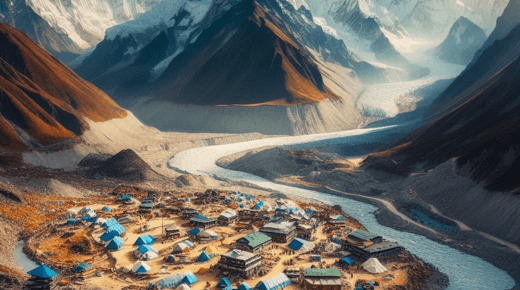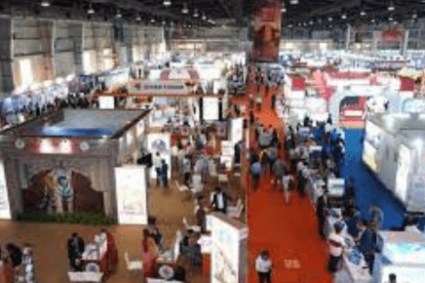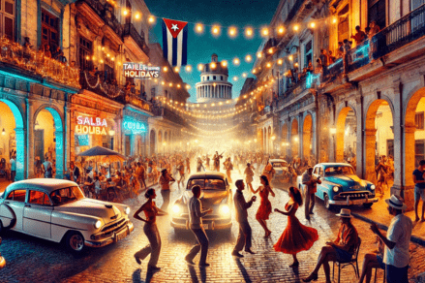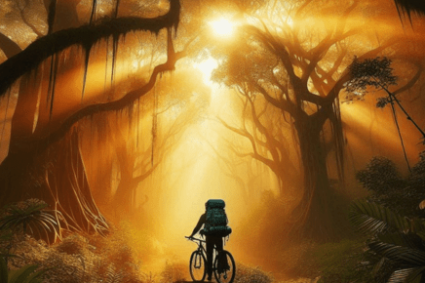
One of the most delightful and beautiful hikes around the world that starts from Lukla to reach both Gokyo and Everest Base Camp. Join us for one of the most spectacular treks in the world that will take you deep into the Sherpa heartland in the want of the Khumbu region where we are surrounded by magnificent scenery, towering peaks, and vibrant Sherpa culture — a true trip of a lifetime! Beginning at the busy Lukla airport, a launching point for exploring the Everest region, trekkers are plunged into emotional terrain as they head toward Everest Base Camp and Gokyo Lakes, where breathtaking views of the Himalayas will be theirs for the taking.
The first few days of the trek are a gradual ascent through Sherpa villages like Phakding and Namche Bazaar, where trekkers can acclimatize to the rising altitude while immersing themselves in the colorful culture of the region. The journey to Everest Base Camp is especially special considering the view of Everest from the back with such picturesque monasteries and prayer wheels. It is grueling both physically and spiritually, with each step taken beneath the view of the world’s highest mountain.
After arriving at Everest Base Camp, many trekkers continue on to Gokyo Lakes, an off-the-beaten-path, a peaceful alternative that is a welcome contrast to the crowds of Everest Base Camp. Gokyo Lakes are a chain of beautiful glacial-fed lakes encircled by towering, snow-capped mountains, giving trekkers an opportunity to connect with the natural world in a more remote and tranquil setting. For those who complete the entire route, the breathtaking reward of Gokyo Ri summit panoramic views of Everest, Lhotse, Makalu, and Cho Oyu awaits.
With the Everest and Gokyo trek, warriors take the road not taken, allowing them to venture into the heart of the Sherpa’s spiritual and cultural legacy, explore the majesty of the Himalayas, and take home a sense of accomplishment that knows no bounds. Hiking with a Sherpa guide makes for a safe adventure filled with knowledge and memories.
Introduction The Best Trekking Journey
One of the most magnificent trekking trails in the world, the trek to Everest Base Camp and Gokyo Lakes is often known as one of the ultimate trekking journeys. So, it is for adventurous souls who want to witness some of the world’s most stunning landscapes, engaging Sherpa culture and skiing through the tedious, high-altitude trails of the Himalayas. The experience goes beyond an adrenalin-pumping vacation: Trekkers pass remote villages and holy Buddhist sites on the way to their goal, providing a spiritual element, as well. Whether your goal is to arrive at the foot of the world’s tallest peak at Everest Base Camp or gaze out over the peaceful Gokyo Lakes framed by soaring mountains, this trek is a once-in-a-lifetime opportunity to explore Nepal’s storied Khumbu region. Sherpas guide trekkers along the way, lending a wealth of knowledge about the demanding terrain and local customs and history. With the right preparation and an open mindset, this trek will offer not just a challenge, but a rewarding sense of accomplishment and connection with the mighty Himalayas.
The Starting Point of the Journey: Arriving in Lukla
Officially known as the Everest Base Camp Trek and Gokyo Lakes Trek, the trail starts at Lukla — a tiny mountain airstrip in the Khumbu region of Nepal. Lukla is known as the “gateway to the Everest region” and is the first stop for most trekkers en route to Everest. Lukla is famous for its extremely short, steep runway, making its airport share the list of the most exciting and dramatic airports in the world. After an exhilarating flight from Kathmandu, where trekkers are first treated to views of the Himalayas, they land in Lukla, which is at an elevation of around 2,860 meters. This is where the trek truly gets going. Lukla is a busy place bursting with trekkers and mountain climbers as it serves not just as the trailhead but also as a bustling gate to the Himalayan mountains. There are a few basic amenities in the village, such as tea houses, trekking gear shops, and guides available for hire (although they can be hired from many other places along the trail), making this a good place to stock up before hitting the trail proper. After one night in Lukla, trekkers head out toward the next major stop and start the slow climb, ascending into the high altitudes. The flight to Lukla is one of the most thrilling flights in an adventurer’s life and although there is slight exhilaration at the end of their journey, the hike through scarily high altitudes and tough terrains starts from here, this just happens to be the first destination or milestone on this marvel of a trek.
The Trek: Lukla to Gokyo and Everest Base Camp
The trek from Lukla to Everest Base Camp and Gokyo Lakes is one of Nepal’s most iconic trekking routes, exposing trekkers to incredible mountain views, remote villages, and lush forests. This trek starts with a gentle downhill to Phakding and then a gradual incline to Namche Bazaar, the principal Sherpa village in the Khumbu area. From Namche, trekkers normally spend a day acclimatizing, as they prepare for the altitude gains to come. Moving forward from the trail, trekkers reach Tengboche, which is an exhilarating stop with an opportunity to explore the famous Tengboche Monastery and surrounding magnificent peaks, including Mount Everest.
Beyond Namche Bazaar, the two treks part ways — trekkers heading for Everest Base Camp continue to Dingboche and then on to Gorak Shep, from where they make the final push to Everest Base Camp proper. On the other hand, trekkers going to Gokyo Lakes take a different route towards Dole and Machhermo before arriving at the scenic Gokyo Lakes. Gokyo Lakes is famed for the chain of turquoise alpine lakes, and trekkers can make a morning ascent to Gokyo Ri for panoramic views of Everest and its neighbors.
For those looking for a full-on adventure, the combination of the two routes offers trekkers the best of both worlds — the dramatic scale of the Everest region and the tranquillity of Gokyo Lakes. The trek, which is quite rigorous, provides the most spectacular views and opportunities to meet local culture and wildlife.
Strategies for Acclimatization on the Trail
Everest Gokyo Trekking route Acclimatization is an important aspect of the Everest Base Camp and Gokyo Lakes treks since both trails bring trekkers into high-altitude locations where the risk of altitude sickness can be very real. From the beginning, you land in Lukla, which sits at 2,860 meters and as you climb, your body needs time to adapt to the lack of oxygen. The general plan for acclimatization is to steadily go upward and take rest days frequently. One of the key practices is the theory of “climb high, sleep low” — hiking up to a higher elevation during the day but descending to a lower altitude to sleep.
The route also typically has critical rest days in places such as Namche Bazaar and Dingboche, where trekkers can acclimatize and explore the surrounding area as their bodies adjust to the altitude. Besides these rest days, trekkers should stay hydrated, avoid alcohol, and eat high-energy foods that can aid the body in adapting to the stress of higher altitudes. Keeping an eye on one’s physiology is important and trekkers should always pay attention to symptoms of altitude sickness including headaches, dizziness, and shortness of breath. Skilled Sherpa guides are indispensable; they know what the early indicators of altitude sickness are and when to suggest that someone needs to stop, go down, or seek medical attention if needed. Provided that trekkers plan ahead for proper acclimatization and pay attention to the signals their bodies send them, they can minimize the risks of high-altitude trekking.
Landmarks and Highlights Along the Way
Lukla to Everest Base Camp and Gokyo Lakes Guide: Legendary Summit to Scenic Elysium A stopover at Namche Bazaar (the Sherpa capital) is commonly the first highlight on this trek, with colorful local markets, beautiful views of surrounding peaks, and acclimatization hikes. This route then takes you to one of the most well-known highlights of the Khumbu region which is the Tengboche Monastery backing the Mount Everest Mountains that gives you a glimpse of the Buddhist culture that makes years out of the country.
If you’re going to Everest Base Camp, you’ll also want to hike to Kala Patthar. One of the best panoramic views of Mount Everest, Lhotse, and the Khumbu Icefall is at 5,545 meters, and the experience is indescribable; a sense of achievement and awe. Itself, the base camp is an unforgettable experience, and for many trekkers, standing at the foot of the world’s tallest mountain is an experience of a lifetime.
On the other hand, there are unique attractions to the Gokyo Lakes route. The turquoise Gokyo Lakes are nestled amid towering peaks, including Cho Oyu, Makalu, and Everest. The ascent to Gokyo Ri provides one of the best perspectives of the Everest massif, along with a birds-eye view of the lakes below. The trek also features a challenging yet rewarding portion that takes you across the Cho La Pass, connecting the Gokyo and Everest Base Camp trails.
Each trek provides an unmissable experience, complete with elements demonstrating the natural beauty and the cultural richness of the Khumbu region.
Discovering the Khumbu Region: Villages, Culture and Terrain
Everest Base Camp via Gokyo Lakes Getting there: Navigating the Khumbu region, Nepal’s terrain-answer to the road less traveled, is leading a brush with the local culture, each difficult step of the way. The trekking routes from Lukla toward Everest base camp and Gokyo lakes pass through a series of beautiful sherpa villages that provide an up-close experience of life in the Himalayas. It is in the first village, Phakding, that trekkers start to experience the serenity of the mountains. Climbing up, they come to Namche Bazaar, a lively town serving as the cultural and commercial center of the Khumbu region. There, trekkers can also meet the Sherpa people, try local food , and buy supplies.
Further along the trails, trekkers pass through villages like Tengboche, Dingboche, and Lobuche, which all offer their unique views of the surrounding peaks as well as a taste of the Sherpa way of life. Trek confirmation also includes monasteries such as the Tengboche Monastery, which in its setting among the ever-present flutter of Tibetan prayer flags adds a spiritual element to the experience.
The Khumbu region is rugged and you go through rocky paths, thick forests, rivers, and eventually glaciers. The climb is steep, especially for climbers going from Namche Bazaar to higher altitudes, but the stark change in scenery, from dense forest to a barren, high-altitude land is both grueling and rewarding. The Khumbu region is a place as much about spirit as it is about physical toil, a place where trekkers can discover the connection of nature, culture, and communion with the divine, all framed by the awesomeness of the Himalayas.
You need to prepare physically: 8 things to consider
The trek to Everest Base Camp and Gokyo Lakes is a challenging one, so being physically prepared is key. These treks need a lot of physical stamina, endurance, and mental preparation as the terrain is rough and the altitude can be challenging. You may want to focus on cardio fitness, leg strength, and endurance building in preparation. Things like hiking, running, cycling, or swimming are great forms of building endurance. Hiking with a loaded pack will do especially well in simulating the conditions you’ll confront on your expedition.
EBC Cho La Pass Trek Along with aerobic training, work on your core and leg strength to help you tackle the varied terrain. Movements such as squats, lunges, and step-ups will also work the muscles used for uphill and downhill climbs. Integrate flexibility and balance work, like yoga or Pilates, to lower the injury risk.
Trekking at high altitudes means your body needs to “work a bit harder and so it needs to get oxygen” so physically preparing for this by hiking at altitude or training with reduced oxygen can help. Mental preparedness is just as vital, as the hike can be physically demanding, and patience and a good attitude are crucial. In the lead-up to the Trek, Rest and Hydration Are Crucial This way you can make sure you look after your body and will be prepared for the physical adventure ahead.
Sherpas Are Key in the Expedition
Important Roles of Sherpas in a Gokyo Lakes & Everest Base Camp Trek Their experience, knowledge, and deep connection to the region are vital, making them integral to the overall experience of trekkers. The sherpas are not only expert navigators but also key guides who will make sure the group stays safe and well.
Sherpas’ superior familiarity with the landscape also allows them to guide trekkers along the more treacherous mountain tracks — including those susceptible to avalanches, rockfalls, and other dangers. These services are also essential for acclimatization, allowing trekkers to go at a steady pace to get used to the altitude gradually and avoid altitude sickness. This is especially relevant in that climbing at altitude can be treacherous without proper acclimatization.
Apart from their guiding knowledge, Sherpas further provide rich cultural context, reciting tales of the mountains, Buddhist practices, and the spiritual meaning of the region. They are closely linked to the land and its people, often giving trekkers an idea of the Sherpa community’s tenaciousness and hospitality. So for trekkers, the Sherpa guide represents a trusted companion, one who will not only ensure physical safety, but also emotional and cultural enrichment on the road.
The experience of trekking with a Sherpa is vital, as they bring knowledge, expertise, and cultural context that turns the trek itself into a rich and meaningful adventure.
It is crucial to manage altitude when you work in high places to stay healthy.
Cho La Pass Gokyo Trek itinerary Controlling elevation is one of the craziest elements of the Everest Base Camp and Gokyo Lakes trek. The trek routes ascend to more than 3,000 m (10,000 ft) where the possibility of altitude sickness is a real threat. The reasoning for this is to acclimatize properly so that one remains healthy at higher altitudes, and also the need to keep an eye on the symptoms of altitude sickness.
The first rule is to ease into it. Ascend slowly, allowing your body time to acclimatize to the thinning air. The “climb high, sleep low” maxim — trekking during the day to higher altitudes but going down to a lower elevation to sleep — is a widely recommended approach. Doing this helps your body adapt without driving it too far.
Keeping hydrated is thus also important at high altitudes. The dry air at high altitudes can suck the moisture out of your body more quickly than you may be used to, so it’s critical to drink lots of water and electrolyte-rich fluids. Steer clear of alcohol and caffeine, which can dehydrate you further.
You can also help your body adjust with proper diet plans. That is why it is crucial to eat a lot of carbohydrates to recharge your body for the physical effort of the hike. Low-fiber foods such as pasta, rice, and fruits are good.
Finally, listen to your body. Wait until you notice your heart pounding without exertion, feeling light-headed, nauseous, or dizzy, to know you need to back off and go strive lower. By recognizing the signs of the body at altitude and following these processes, trekkers are able to successfully cope with the physical and environmental challenges of high-altitude trekking.
Water, Weather, Terrain, and Fatigue Factors
Hiking the Everest Base Camp and Gokyo Lakes will be a physically demanding trek, and some trekkers will face unpredictable weather, the challenges of a rough terrain, and fatigue. The weather is one of the most important hazards, as it can transform quickly in the mountains. It can be freezing cold, even at higher altitudes, during the trekking seasons of spring and autumn, with temperatures dropping well below freezing. Trekking in such conditions requires preparation for cold mornings, snowstorms, and possibly freezing temperatures at night time. Having the right clothing for the weather, including layers and waterproof apparel, is key to staying safe and comfortable.
The trek routes are challenging with steep uphill hikes, rocky pathways, and narrow, winding trails that demand a high level of physical strength. The trail can be rugged and slippery, especially following rain or snow, so the risk of slipping and injury is real. Trekkers must confront difficult terrain — crossing forests, rivers, and cliffsides — all with a rucksack of gear and supplies on their backs. Read more about “Gimkit Join”
Lastly, fatigue always accompanies this journey. Climbing at high altitudes with gear day after day, and the effects of altitude sickness can make you physically and mentally exhausted. Other strategies to combat fatigue include trekking at a slow and steady pace, taking frequent breaks, drinking plenty of water, and eating enough food. Mental fortitude is also important; the trek can be daunting at times, but putting one foot in front of the other, and taking in the beauty of what is around, can help keep spirits high.
Journey to the Destinations: Everest Base Camp and Gokyo Lakes
The pinnacle of this epic trek is ultimately reaching the destinations of the Gokyo Lakes and Everest Base Camp. Both places provide an experience that is far different from the other, yet equally breathtaking, and reaching either naturally gives you that feeling of accomplishment.
Gokyo and Everest Base Camp Trek Many trekkers dream of reaching Everest Base Camp. After several days of demanding ascents, the last leg of the camp is exhilarating, with trekkers greeted with views of the towering Everest, surrounded by glaciers and the massive Khumbu Icefall. Everest Base Camp, colorful tents and the noise of climbers getting ready for their summit attempts fill this site, simply breathtaking. Trekking here is truly an unforgettable journey to the base of the world’s highest peak, and standing at this iconic location gives trekkers a profound sense of accomplishment.
On the other hand, Gokyo Lakes provides a more peaceful experience. Perched on the doorstep of the Cho Oyu and other majestic peaks in the Himalayas, these otherworldly lakes are an indelible image, with vivid, turquoise waters against the rugged, snowy backdrop of the surrounding mountains. Another amazing reward for trekkers is the Gokyo Ri summit, which presents panoramic views of Everest, Lhotse, Makalu, and Cho Oyu. If you are looking for a quiet alternative to the popular Everest Base Camp then Gokyo is the perfect destination for you.
Despite their differing character, both locations are equally rewarding, allowing trekkers to get up close and personal with the power of the Himalayas.
Conclusion: Final Thoughts on the Definitive Himalayan Trek
Embarking on a Journey of Devotion The Trek to Everest Base Camp and Gokyo Lakes is a Testament to the Spirit of Adventure and Spiritual Pursuit The difficulty of the altitude everything of the Himalayas and the culture of the Sherpa communities all in addition to an adventure that is like no other. With many trekkers passing through the harsh and stunning terrain, they see the mountains are evermore a giant machine reminding them of their force and splendor, a reminder that it takes a spirit of resilience to trek to these remote places, and a humble sense of achievement that comes with every step taken in the shadow of Everest.
Whether one is trekking with a Sherpa guide or not, this is beneficial by guiding one not just for exercise, but also with local life and the significance that they bring to this world. By the time trekkers arrive at Everest Base Camp or the serene shores of Gokyo Lakes, they have accomplished an exceptional physical challenge and acquired a deep understanding of the mountains and the people who inhabit them.
Ultimately, the Himalayan trek is more than a bucket-list destination—it’s an adventure for the body, the soul, and the mind that shapes any trekker’s aspirations and memories. In hindsight, this will always remind me to feel gratitude towards the beauty, culture, and spirit of the Himalayas, and of the Sherpas who help make these experiences possible.






